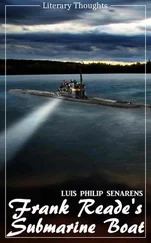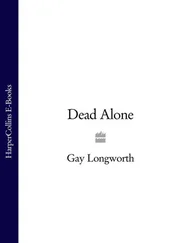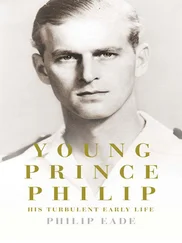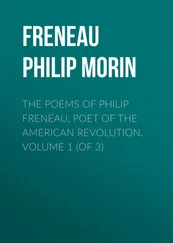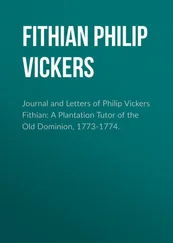The culture gap was bridged in the first place by Greek immigrants from Constantinople (some of whom had arrived in the entourage of Ivan’s new wife) who were engaged to serve the Grand Prince. The two Trakhaniot brothers — who had served the Byzantine emperor — the Rhallis, the Angelos, the Laskaris and others were familiar with imperial protocol and institutions. They also had practical knowledge of how Europe’s rulers dealt with one another, and brought their understandings of late-Roman statecraft to Russia. Iurii Trakhaniot served as ambassador to the Holy Roman Emperor Frederick III and to the King of Denmark, helped organize the reception of the imperial ambassador to Moscow, and was to rise to the dignity of treasurer (kaznachei), the Russian official in charge of foreign relations at that time. 13Other immigrants were ethnic Italians, notably Gianbattista della Volpe, who has been credited with suggesting the match between Ivan and Zoe/Sofia. He was engaged as Ivan’s master of the mint, and some of his relatives were hired too. Volpe himself eventually became an Orthodox Christian, but it is not certain if all ‘Latin’ incomers did, and the Grand Prince employed at least one German and even a Jew, a merchant called Khoja Kokos, whom he used as an intermediary in the Crimea. 14But many more of the first Russian diplomats were home grown.
Most of these originally had other, lesser, functions at court, several of them as clerks or falconers. Falconry was an elite sport in late medieval Europe, not least in Russia, and the Grand Prince ran a large falconry establishment. Since well-trained falcons made princely gifts for foreign potentates, some of these falconers came to be used in diplomatic functions. One such was Mikhail Iaropkin, who was sent as an envoy to Poland four times. But the work was directed and processed by officials, secretaries and under-secretaries — some of them specialists like Andrei Fedorovich Maiko, who dealt chiefly with Polish-Lithuanian affairs — and there was a team of translators to handle the correspondence. By 1500 there were to be more than twenty translators, including Bakshei, who dealt with correspondence in Turkish with the khans of the Crimea, the nomadic Nogais, and with the Ottoman sultan. From 1504 there was a permanent German translator, Istoma Maloi. 15
The small but variegated cadre of officials translated documents from and into foreign languages (mainly Latin), acted as interpreters, served as envoys and messengers to foreign courts, saw to the reception of foreign emissaries in Russia, and advised the Grand Prince on the wider world. They drew up letters of credence for outgoing embassies, ensuring they presented the Grand Prince’s titles accurately and sealing them with the appropriate seal — from 1497 both the ancient symbol of the Roman Empire, the double-headed eagle, and the image of St George slaying a dragon. 16They also established a record-filing system which was to prove essential not only for establishing protocol and precedence but as a back-file on policy and a source of knowledge on anything from philosophy to firearms. The staff resources must have been stretched as the Grand Prince’s foreign relations became more widespread and complex. In the last quarter of the fifteenth century links were established with Milan and Hungary, Kakhetia and Vienna. An alliance was formed with Denmark against Sweden, and new policies were formulated towards the Hanseatic League of north-German commercial cities and towards the Livonian Knights, as well as the successor states of the Golden Horde. 17True, there were no permanent embassies at that time: one ruler would send a mission to another only as occasion demanded. Even so, we can infer that staffing such missions must have constituted a problem.
Educated immigrants in Ivan’s service were relatively few, so Russians had to be sent out. However, most Russians of the time lacked not only knowledge of a foreign language but also the required degree of sophistication and self-discipline; hence rules were laid down for them to follow. The instructions to an embassy to Poland, which was headed by a senior counsellor (okolnichii) and included one of the above-mentioned falconers, began with exhortations to members of the embassy to respect each other. It went on to explain protocol, particularly relating to the drink with which their hosts could be expected to regale them after dinner:
‘You should drink moderately, and not to the point of drunkenness. Wherever you happen to drink you should watch yourself and drink carefully, lest your carelessness bring dishonour to Our name. Any misbehaviour on your part will dishonour both Us and yourselves, so watch yourselves in all things.’ Finally came rules regarding precedence within the embassy, and the enforcement of discipline: ‘Reprimand anyone who disobeys you, and hit him.’ 18
The repetition and the violence reflect a largely oral culture and a boorish society with a tendency to anarchy. Despite this, the routines put in place for managing Ivan’s foreign relations, with their meticulous paperwork, their care for precedent, and their tendency never to take anything for granted, were to help Russia keep abreast of the European diplomatic system, which by 1500 was still in the process of formation. 19
Cynics may define a diplomat as someone who goes abroad to lie for his country, but diplomats have usually been spies too, in the sense of being used to gather intelligence. The Russians were no exception. One embassy was instructed to gather political intelligence not only on Austria and Hungary but also on France and Brittany, to establish what the Habsburg emperor Maximilian’s intentions were towards Hungary. (Maximilian had asked Muscovy for help when Matthias Corvinus, king of Hungary, captured Vienna in 1485.) But Moscow also wanted to know what the Emperor’s present marital status was, and what suitable brides for the Grand Prince’s sons might be available at his court. A mission sent to Poland in 1493 was charged in particular with finding out about Conrad of Mazovia. Was he now subservient to King Casimir, with whom he had been in conflict? What dues and services did he owe Casimir? What were his relations with Prussia? What was his position in the princely pecking order? And how populous and powerful was the principality he ruled? The list went on. 20
How quickly Muscovy learned the language of diplomacy and how to seize advantage and avoid the pitfalls of the diplomatic game is illustrated by the handling of a seemingly flattering overture from the Holy Roman Emperor. In 1489 an emissary called Nicholas Poppel arrived with a letter of credence from the Holy Roman Emperor Frederick III. He proceeded to outline a proposal for a dynastic marriage between Ivan’s daughter and one of three candidates: Duke Albrecht of Padua, Count John of Saxony, and Sigismund, margrave of Baden. He also asked if Ivan would accept the title ‘king’ from the Emperor. The proposal might seem flattering, but the next day Poppel was told that Ivan would send his reply to the marriage proposal to the Emperor with his own emissary. As for the offer of a royal crown, Ivan affected outrage at the implication that he was not the Emperor’s equal: ‘By the grace of God we have always been sovereign in our territories, since the first of our ancestors.’ He did not hold his titles thanks to anyone else, nor had he purchased them: ‘We can be regarded as no one’s subject by any authority. We hold our title only from Christ. We reject rights deriving from others.’ 21
Clearly the Emperor was underinformed about the Grand Prince. Indeed, Poppel’s instructions had included a charge to find out whether Ivan was a vassal of the Polish king, and Ivan’s men had to explain to Poppel that, so far from being his vassal, Ivan was both richer and more powerful than Casimir. 22The response to Frederick’s marriage proposal was delivered by an embassy headed by Iurii Trakhaniot. It explained that Russia’s rulers had long had relations of ‘love and alliance’ with the Roman emperors, ‘who had given Rome to the Pope and themselves ruled from Byzantium even until the time of my own father-in-law John Palaeologue’. It was therefore inappropriate for Ivan’s daughter to marry princes of such low rank as had been proposed, although a match with Frederick’s son, the recently widowered Archduke Maximilian, might be possible.
Читать дальше





![Stephan Orth - Behind Putin's Curtain - Friendships and Misadventures Inside Russia [aka Couchsurfing in Russia]](/books/415210/stephan-orth-behind-putin-s-curtain-friendships-a-thumb.webp)
